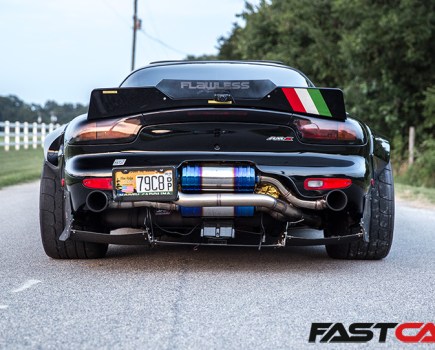The icon. The legend. The ultimate Fast Ford? Maybe. But a stock Escort RS Cosworth merely scratches the surface when it comes to Cossie thrills. Here are our tuning tips on how to unleash its true performance potential.
Few cars evoke such emotion among fast Ford fans as the Escort RS Cosworth. The flared arches, chunky styling, motorsport heritage, and of course that iconic whale tail, are enough to make even the most hardened of Blue Oval buffs go weak at the knees.
While 227bhp may have been enough in the mid-nineties, today, that sort of power is easy to come by. A three-cylinder Fiesta with a simple Stage 1 remap makes more than that… and dare we say, drives better too!
The later T25-equipped ‘Small Turbo’ addressed some of the issues, and without the constraints of having to meet motorsport homologation rules, this uncompromising road car may have had around 10bhp less than its T34-boosted predecessor, but was a much better real-world machine as a result.
You can’t deny the styling is fantastic. Nothing else has anywhere near the same level of road presence. But if you want your EsCos to go as good as it looks, then you’ll need to tinker with a few bits, which is where this Ford Escort RS Cosworth tuning guide comes in.
The good news is that despite being 30 years old, there’s still a wealth of knowledge and an army of experts just waiting to unlock the Escort’s true potential. How far you go is up to you. You can create anything from a stunning showpiece right through to an all-conquering race or rally weapon, plus anything in between.
So, let’s take a look at some of our preferred tweaks to take your Ford Escort RS Cosworth to the next level.
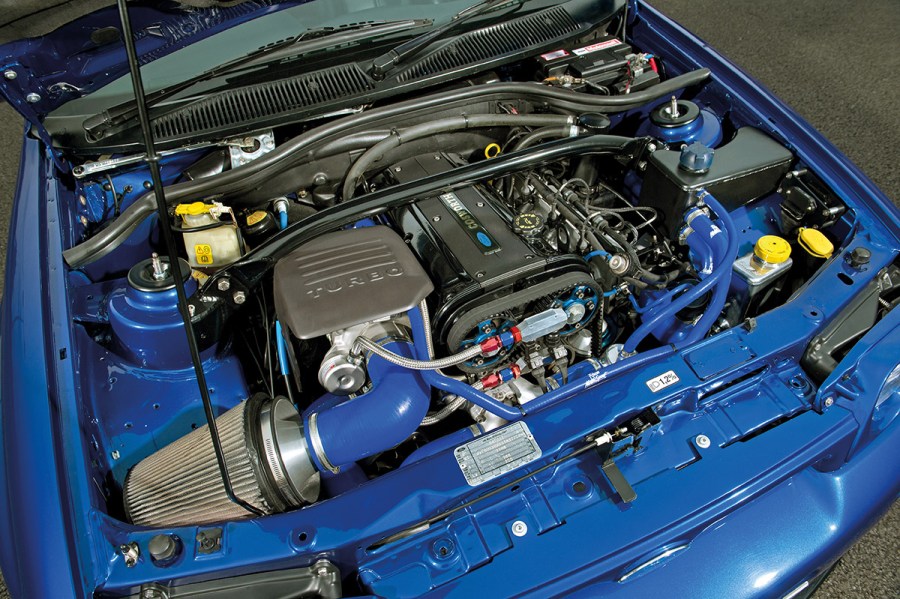
Ford Escort RS Cosworth Engine Tuning
The famous Cosworth YB engine is probably the second main reason you bought an EsCos, behind its looks. But, as anyone who has driven a stock example will testify, the factory power does feel a little flat compared to modern machines.
Thankfully, it’s easily remedied. A simple Stage 1 chip – for both T34 and T25 cars – is a must; not only does it provide a useful dollop of extra power but livens up the whole driving experience with sharper throttle response and an increased sense of urgency too. A good first-stage remap will take things to around 270bhp, which is ideal for owners who still insist on a factory-original appearance, even under the bonnet.
Bolt-on tuning modifications
But those who are prepared to add some performance hardware will reap the rewards of doing so. The fundamentals of induction kit, exhaust system and intercooler upgrades should be top of your list. These will free up a bit more power, lay the foundations for further tuning, and aid the ageing Cossie’s reliability too. Plus, let’s face it, they look much better than the stock parts they replace too and are so popular that a YB just looks odd without them these days. A suitable remap should take things to around the 300bhp level, which is pretty much the limit you’ll coax from the later T25 car’s EEC-IV engine management system.
Engine management
At this point you’ll want to switch to the P8 Weber-Marelli ECU from a T34 EsCos or an even earlier L8 ECU from a 4×4 Sapphire Cosworth – handily, Autodynamix sells plug-and-play conversion looms that are perfect for the job. Alternatively, you could opt to fit a standalone ECU at this point too – the key is gaining control over more parameters than the stock EEC-IV allows. The smaller T25 turbo itself will also start to run out of puff, but fitting a bigger turbo is no drama at all.
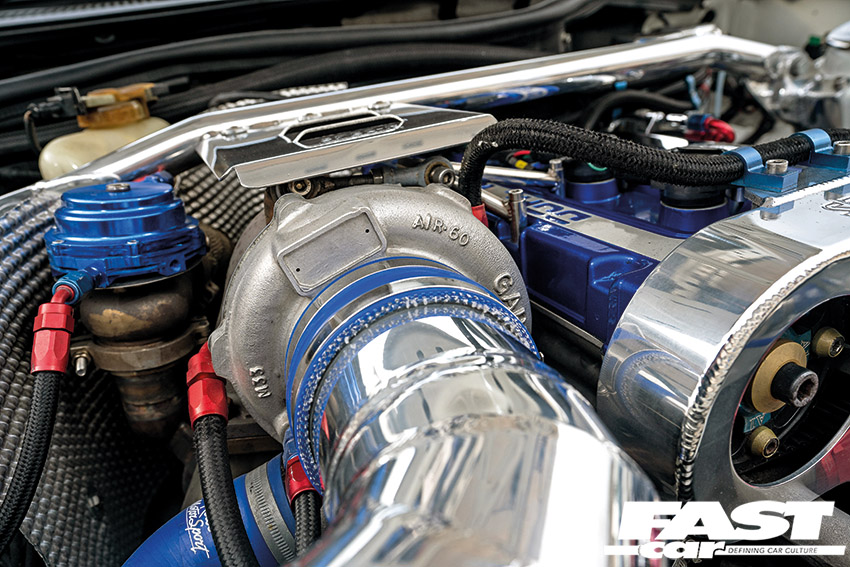
Bigger turbos
From here, the tuning path is the same for both big turbo and small turbo models. More boost and larger injectors will take power all the way up to 350bhp – occasionally beyond. At this point it’s time to start thinking about what’s going inside: at the very least you’ll want an uprated head gasket but it’s very tempting to start adding lairy profile camshafts and a few other tweaks at the same time. The bottom end is good for more, but it’s wise to start thinking about different spec pistons (especially if they’ll need valve cut-outs to avoid interference with the bigger cams) and beefier con-rods at the same time.
The T34 turbo can be pressed to kick out 400bhp, but these days they are many better options available. Speak to specialists like Mark and Vince at Turbo Performance – they’ve been tuning YBs for years and have kept up to date with all the latest turbo tech so will be able to advise you on this perfectly.
With the boost taken care of, you’ll need to quench the YB’s accompanying thirst for fuel. Modern injectors are more than capable of doing the job, even on 500-to-600bhp machines, but many owners like the old-school aesthetics of an eight-injector setup when they pop the bonnet.
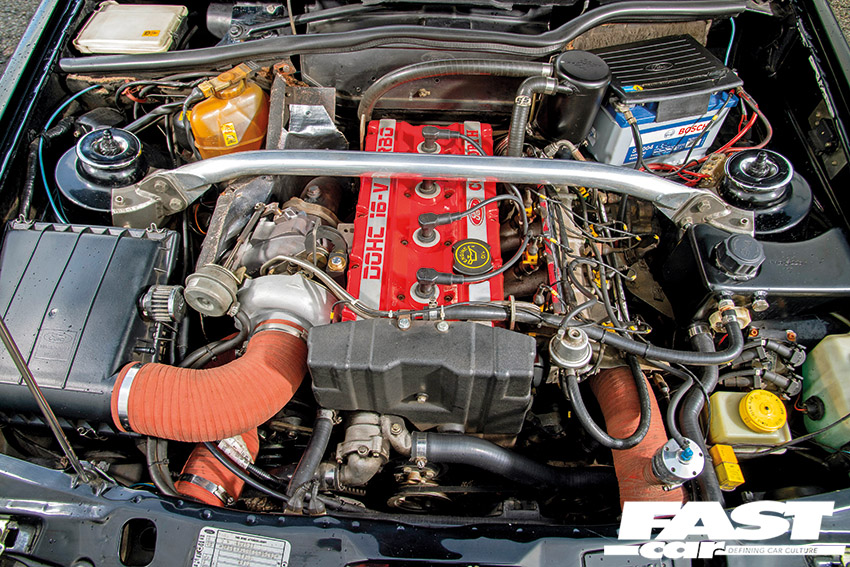
Further supporting modifications when tuning your Ford Escort RS Cosworth for high power
One other thing worth pointing out that never gets mentioned in tuning guides like this is that you’ll also need to factor in ancillary costs too: the stock fuel pump won’t supply the fuel fast enough to feed those bigger injectors; and the fuel lines themselves will probably also need replacing, ideally with some proper motorsport-spec fittings for reliability.
The engine breather system will also need uprating to cope with the extra demands, and if you are still working with the original electronics, the wiring loom will almost certainly be corroded and shot to bits. None of those will give you an instant bhp boost, granted – but without them, you won’t be going anywhere.
There are several different approaches you can take when it comes to tuning the Cossie YB, so speak to your engine builder and discuss what you want from the car before you start. That way you can spec the engine build correctly from the start to avoid disappointment or unnecessary expense and delay.
For more information, we’ve got a dedicated Cosworth YB tuning guide you can check out.
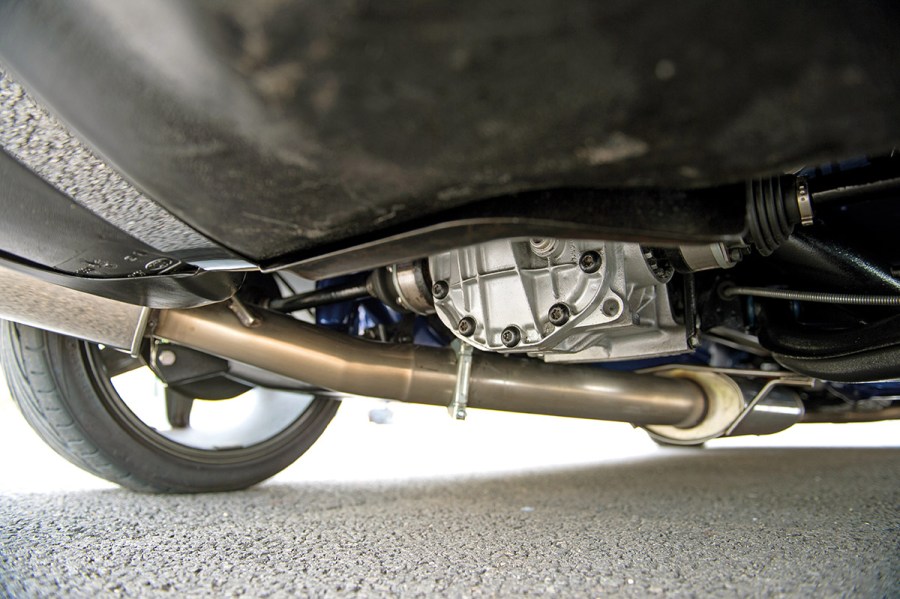
Ford Escort RS Cosworth Transmission Tuning
The Ford Escort RS Cosworth shares the same MT75 gearbox and viscous-coupling limited-slip differentials as found in the Sapphire Cosworth 4×4, and therefore has the same weaknesses. The synchros often take a beating and a standard ’box really doesn’t like anything over about 350bhp. A strengthened gearkit is the answer, and there are several to choose from ranging from fully straight-cut, to semi-straight-cut partial gear kits.
The original-spec clutch will cope with moderate increases in torque, but asking it to hang on to over 50 percent more than it was originally designed for will spell trouble. There are plenty of heavy-duty organic upgrades these days that can handle the power while remaining user-friendly enough for comfortable road use. Alternatively, there’s a whole world of motorsport-spec upgrades available for track and race cars too.
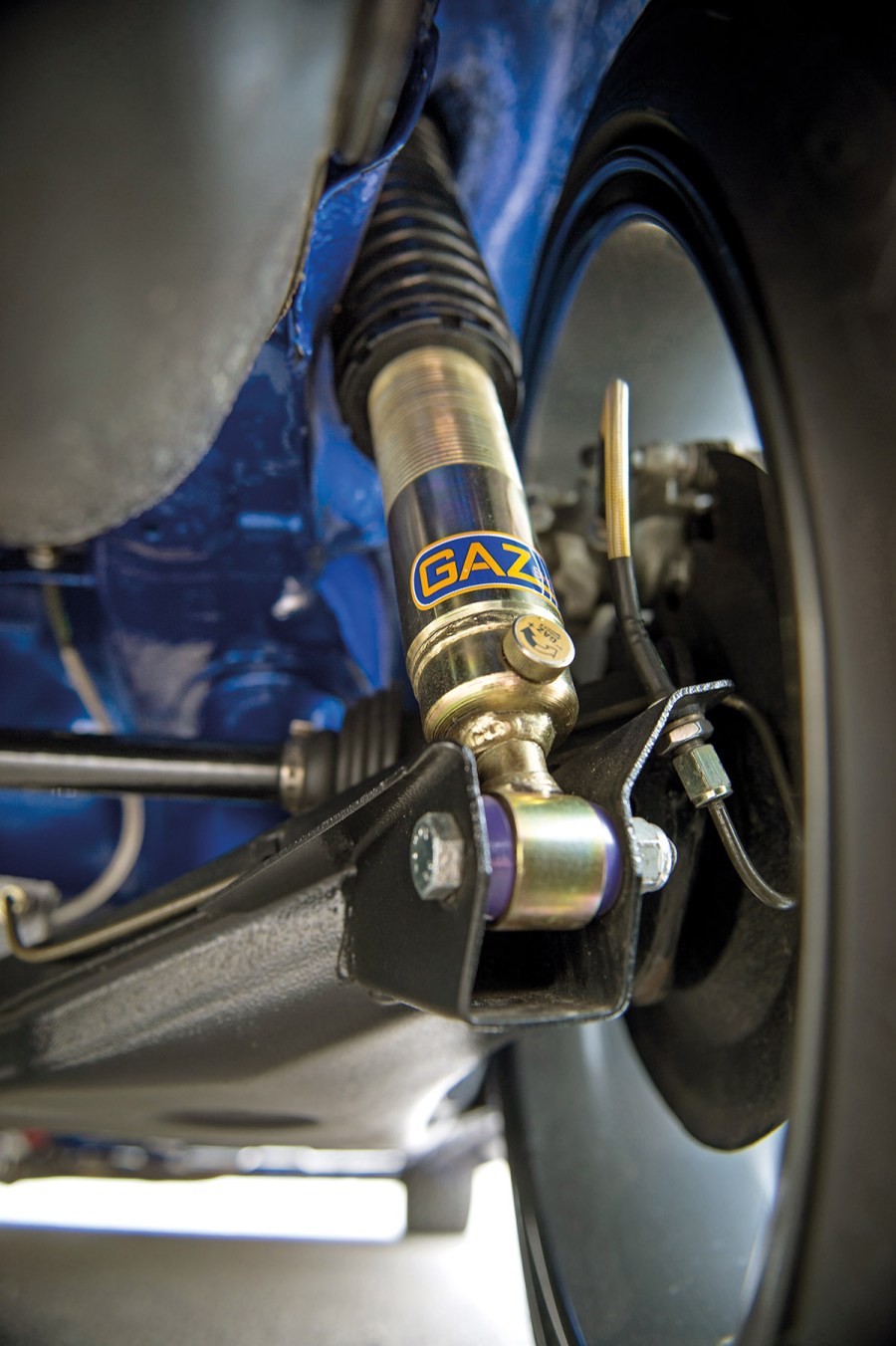
Ford Escort RS Cosworth Suspension Tuning
The first question you need to ask here is ‘what will I use the car for?’, and if the answer is mainly road use, then invest in a decent set of matched springs and dampers. Bilstein has always been a favourite of ours because they just do the job faultlessly, but Konis also come very highly rated for the Escort.
Many owners fit coilovers, but unless you’re going to take full advantage of them by having the car professionally set up on corner-weight scales (well worth it for a tuned car that gets driven hard) then they are probably overkill. Worse than that, unless you do set them up correctly, coilovers may even prove detrimental to the handling. Get it right though, with a well-specced set designed for fast road use and the occasional track outing, and the car will come alive in the corners.
It’s also worth replacing the sloppy old rubber bushes with tight and firmer Powerflex upgrades – most of the bushes will be well worn by now and in need of replacement, so fitting upgrades makes a lot of sense.
Be sure to visit our guide to the best car suspension brands for more advice on where to buy.
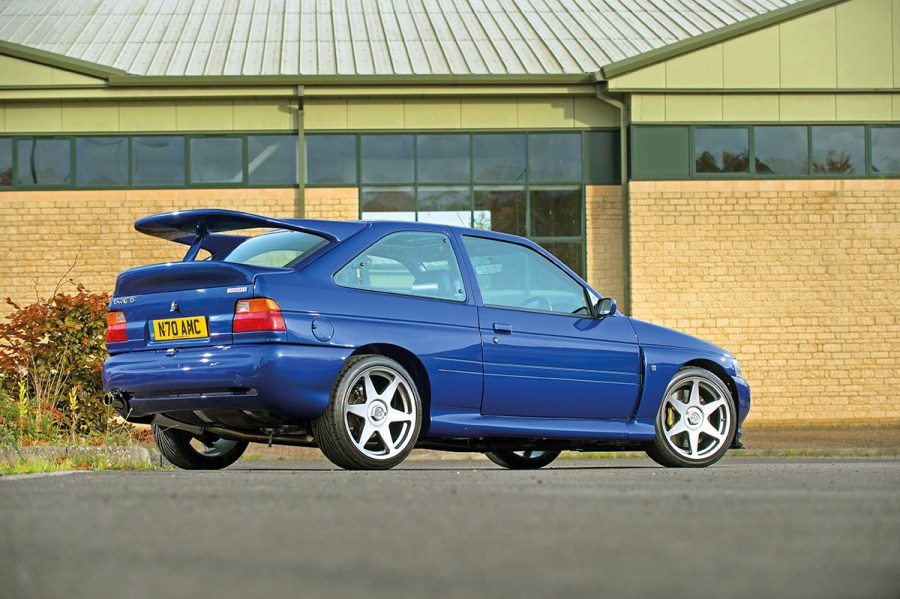
Ford Escort RS Cosworth Brake Tuning
If there’s one area of the Escort RS Cosworth that’s a bit of a let-down, it’s the brakes. They work, just about, but they look terrible. And you’ll quickly find their limits when you start to push harder.
A set of performance discs and pads give the extra bite needed for most road cars but does nothing for the aesthetics. A proper big brake kit is the only way to go, with offerings for the well-established AP Racing being the stand-out favourite. Big brake kits tend to start at 330mm diameter and increase to 355mm, 362mm, or massive 378mm options. None of these will fit behind the stock 16in alloys, but Reyland Motorsport does offer a 308mm big disc upgrade to work with the original caliper for those looking to maximise braking performance but retain the stock alloys.
Looking for inspiration? Visit our guide to the best brake pads and rotors.
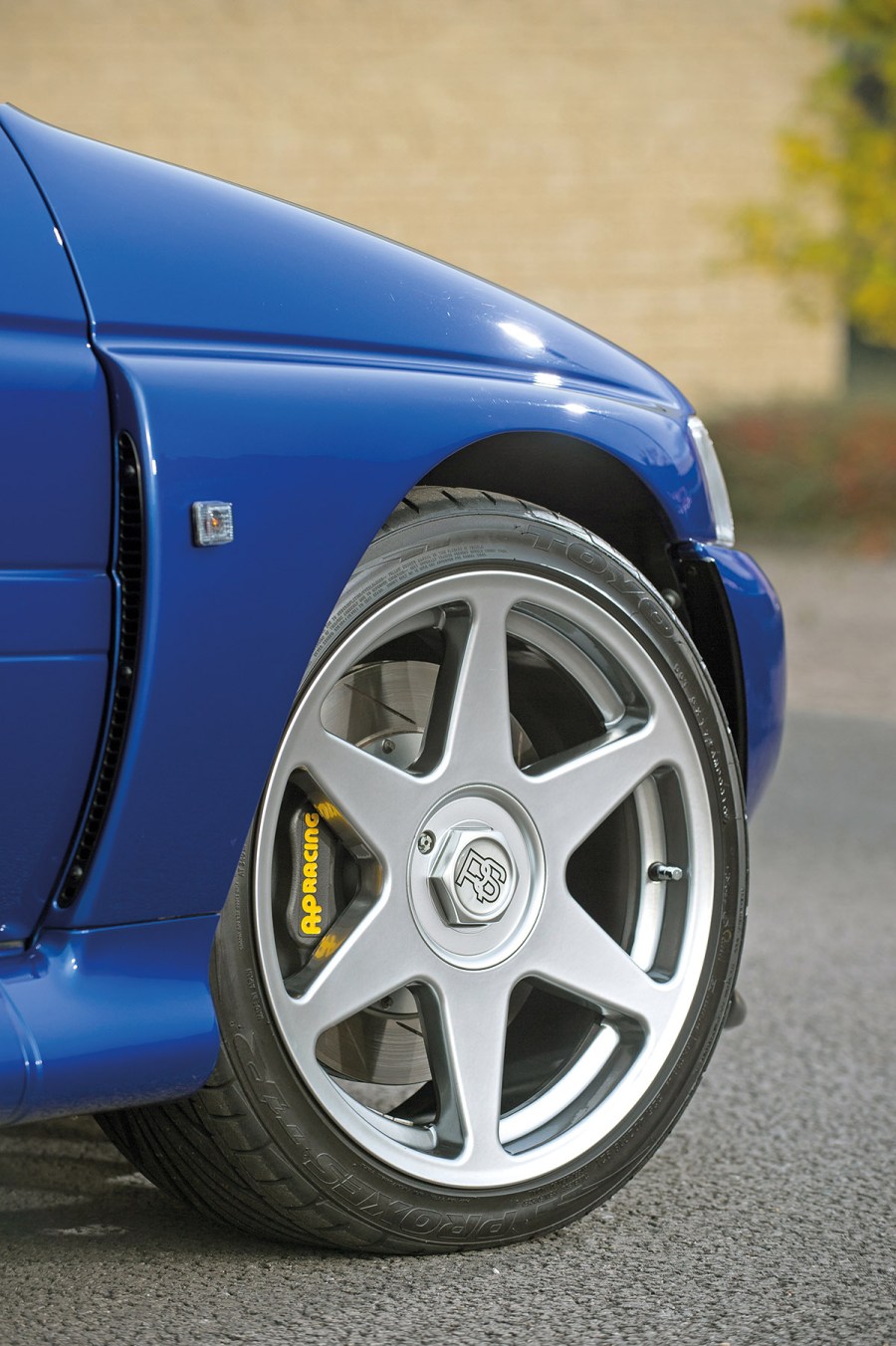
Wheel and Tyre Options
The five-spoke Escort Cossie wheel is one of the all-time Ford greats. It’s been fitted to almost every model to carry the Blue Oval badge over the years and has been the subject of countless replicas too. Needless to say, most owners don’t feel the need to change anything.
But, if you’ve fitted bigger brakes or are looking to personalise the appearance of your EsCos, then new wheels are a must. Upping to 17s or even 18s is common and relatively problem-free; 19s will just about squeeze under the arches with some work.
The stock alloys have an unusually low offset for a Ford at just ET25, so wheel choice can be limiting. Compomotive wheels are always a popular choice with various fitments that will suit, including the 8.0×17” MO1785 that’s available with an ET20 offset to fill the EsCos’s arches perfectly.
We’ve also seen five-stud conversions completed to open a wider choice of wheel options for the EsCos – just don’t go to all that trouble and then bolt on a set of cheap Japanese rims that’ll detract from the Cossie’s classic looks.
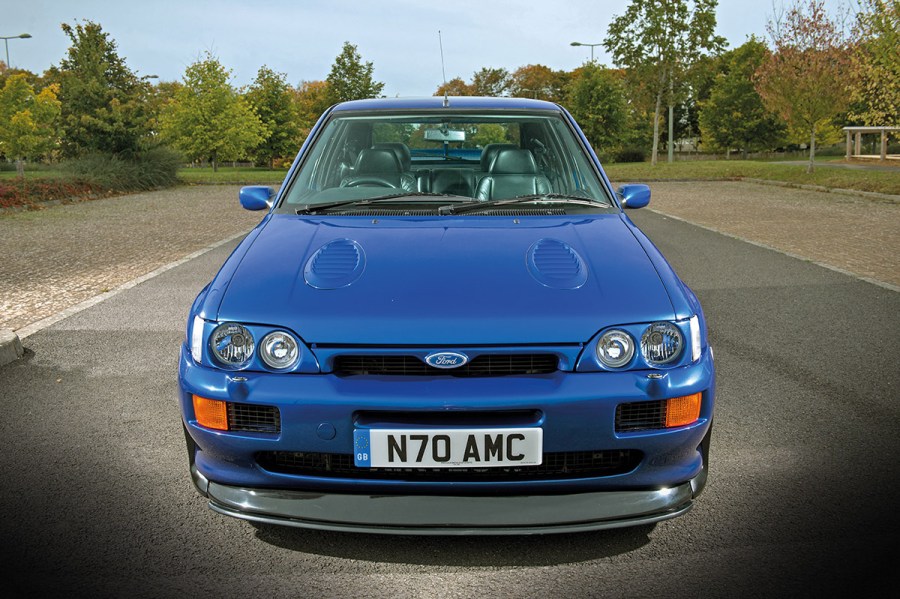
Ford Escort RS Cosworth Exterior Modifications
You didn’t buy an Escort RS Cosworth thinking it looked bland, did you? So why would you think you can do better? Don’t ruin one of the most iconic automotive designs of all time with tacky add-ons in the name of ‘making it your own’. But, if you really are the kind of person who simply cannot leave things alone, then the key is ‘less is more’. Subtle tweaks like carbon fibre pieces (real, not fake stuff!) always works well, and the WRC bodykit certainly adds some motorsport appeal, if not a little divisive among fans for a road car.
If you really want to set the cat among the pigeons, consider removing the whale tail as Ford offered with the Aero-delete option when the car was new – prepare to be admired and chastised in equal measure at shows though. Oh, and never, ever, mention a third wing!
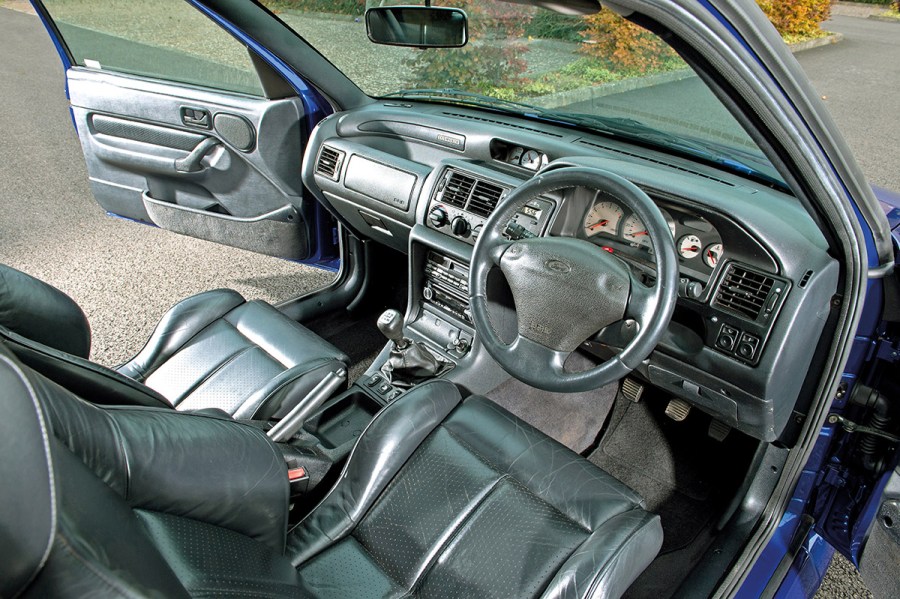
Interior Upgrades for the Escort RS Cosworth
Most Escort RS Cosworths were fitted with leather Recaros from the factory, and there’s nothing wrong with them at all for fast road use. We prefer the original Hex cloth seats, but that’s just a personal preference, and both types are perfectly suited to fast road driving.
For regular track use, however, they could be better. In those cars, many owners opt to fit proper motorsport bucket seats complete with four-point harnesses. Stripping out the rear seats and adding some lightweight carpet and a cargo net to keep things neat and tidy gives an OEM-like Clubsport feel to the cabin.







